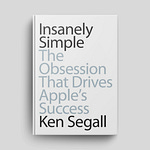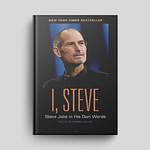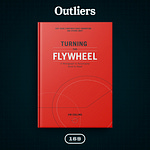In 1985, Warren Buffett had to make an incredibly difficult decision. Which was whether to shut down the textile business Berkshire Hathaway — the original business Warren acquired, which was where Berkshire Hathaway got it's name.
In today's episode, I break down that decision and why the ultimately closed the business with a summary of Warren Buffett's Annual Letter from 1985.
Why cover this?
Because it's a fascinating look at how Warren went about making a phenomenally challenging decision — one that was close to his own heart. And I think it offers a lot of insight into how we can all go about analyzing and ultimately making difficult decisions in our own work and lives.
Here's a quick excerpt of that letter:
Over the years, we had the option of making large capital expenditures and the textile operation that would have allowed us to somewhat reduce variable costs.
Each proposal to do so looked like an immediate winner. Measured by standard return on investment tests, in fact, these proposals usually promised greater economic benefits than would have resulted from comparable expenditures in our highly profitable candy and newspaper businesses.
But the promised benefits from these textile investments were illusory.
Many of our competitors, both domestic and foreign, were stepping up to the same kind of expenditures. And once enough companies did so, their reduced costs became the baseline for reduced prices industry-wide.
Viewed individually, each company's capital investment decisions appeared cost-effective and rational. Viewed collectively, the decisions neutralized each other and were irrational, just as happens when each person watching a parade decides he can see a little better if he stands on tiptoes.
After each round of investment, all the players had more money in the game and returns remained anemic. Thus we faced a miserable choice.
Huge capital investment would have helped to keep our textile business alive, but would have left us with terrible returns on our ever-growing amounts of capital. After the investment, moreover, the foreign competition would still have retained a major continuing advantage in labor costs.
A refusal to invest, however, would make us increasingly non-competitive, even measured against domestic textile manufacturers.
I always thought myself in the position described by Woody Allen in one of his movies. "More than any other time in history, mankind faces a crossroads. One path leads to despair and utter hopelessness, the other to total extinction." Let us pray we have the wisdom to choose correctly.
"The Anxieties of Business Change" by Warren Buffett
Here's the full excerpt from the Berkshire Hathaway's 1985 Shareholder Letter:
In July we decided to close our textile operation, and by yearend this unpleasant job was largely completed. The history of this business is instructive.
When Buffett Partnership, Ltd., an investment partnership of which I was general partner, bought control of Berkshire Hathaway 21 years ago, it had an accounting net worth of $22 million, all devoted to the textile business. The company’s intrinsic business value, however, was considerably less because the textile assets were unable to earn returns commensurate with their accounting value. Indeed, during the previous nine years (the period in which Berkshire and Hathaway operated as a merged company) aggregate sales of $530 million had produced an aggregate loss of $10 million. Profits had been reported from time to time but the net effect was always one step forward, two steps back.
At the time we made our purchase, southern textile plants — largely non-union —opal were believed to have an important competitive advantage. Most northern textile operations had closed and many people thought we would liquidate our business as well.
We felt, however, that the business would be run much better by a long-time employee whom. we immediately selected to be president, Ken Chace. In this respect we were 100% correct: Ken and his recent successor, Garry Morrison, have been excellent managers, every bit the equal of managers at our more profitable businesses.
In early 1967 cash generated by the textile operation was used to fund our entry into insurance via the purchase of National Indemnity Company. Some of the money came from earnings and some from reduced investment in textile inventories, receivables, and fixed assets. This pullback proved wise: although much improved by Ken’s management, the textile business never became a good earner, not even in cyclical upturns.
Further diversification for Berkshire followed, and gradually the textile operation’s depressing effect on our overall return diminished as the business became a progressively smaller portion of the corporation. We remained in the business for reasons that I stated in the 1978 annual report (and summarized at other times also): “(1) our textile businesses are very important employers in their communities, (2) management has been straightforward in reporting on problems and energetic in attacking them, (3) labor has been cooperative and understanding in facing our common problems, and (4) the business should average modest cash returns relative to investment.” I further said, “As long as these conditions prevail — and we expect that they will — we intend to continue to support our textile business despite more attractive alternative uses for capital.”
It turned out that I was very wrong about (4). Though 1979 was moderately profitable, the business thereafter consumed major amounts of cash. By mid-1985 it became clear, even to me, that this condition was almost sure to continue. Could we have found a buyer who would continue operations, I would have certainly preferred to sell the business rather than liquidate it, even if that meant somewhat lower proceeds for us. But the economics that were finally obvious to me were also obvious to others, and interest was nil.
I won’t close down businesses of sub-normal profitability merely to add a fraction of a point to our corporate rate of return. However, I also feel it inappropriate for even an exceptionally profitable company to fund an operation once it appears to have unending losses in prospect. Adam Smith would disagree with my first proposition, and Karl Marx would disagree with my second; the middle ground is the only position that leaves me comfortable.
I should reemphasize that Ken and Garry have been resourceful, energetic and imaginative in attempting to make our textile operation a success. Trying to achieve sustainable profitability, they reworked product lines, machinery configurations and distribution arrangements. We also made a major acquisition, Waumbec Mills, with the expectation of important synergy (a term widely used in business to explain an acquisition that otherwise makes no sense). But in the end nothing worked and I should be faulted for not quitting sooner. A recent Business Week article stated that 250 textile mills have closed since 1980. Their owners were not privy to any information that was unknown to me; they simply processed it more objectively. I ignored Comte’s advice — “the intellect should be the servant of the heart, but not its slave” — and believed what I preferred to believe.
The domestic textile industry operates in a commodity business, competing in a world market in which substantial excess capacity exists. Much of the trouble we experienced was attributable, both directly and indirectly, to competition from foreign countries whose workers are paid a small fraction of the U.S. minimum wage. But that in no way means that our labor force deserves any blame for our closing. In fact, in comparison with employees of American industry generally, our workers were poorly paid, as has been the case throughout the textile business. In contract negotiations, union leaders and members were sensitive to our disadvantageous cost position and did not push for unrealistic wage increases or unproductive work practices. To the contrary, they tried just as hard as we did to keep us competitive. Even during our liquidation period they performed superbly. (Ironically, we would have been better off financially if our union had behaved unreasonably some years ago; we then would have recognized the impossible future that we faced, promptly closed down, and avoided significant future losses.)
Over the years, we had the option of making large capital expenditures in the textile operation that would have allowed us to somewhat reduce variable costs. Each proposal to do so looked like an immediate winner. Measured by standard return-on-investment tests, in fact, these proposals usually promised greater economic benefits than would have resulted from comparable expenditures in our highly-profitable candy and newspaper businesses.
But the promised benefits from these textile investments were illusory. Many of our competitors, both domestic and foreign, were stepping up to the same kind of expenditures and, once enough companies did so, their reduced costs became the baseline for reduced prices industrywide. Viewed individually, each company’s capital investment decision appeared cost-effective and rational; viewed collectively, the decisions neutralized each other and were irrational (just as happens when each person watching a parade decides he can see a little better if he stands on tiptoes). After each round of investment, all the players had more money in the game and returns remained anemic.
Thus, we faced a miserable choice: huge capital investment would have helped to keep our textile business alive, but would have left us with terrible returns on ever-growing amounts of capital. After the investment, moreover, the foreign competition would still have retained a major, continuing advantage in labor costs. A refusal to invest, however, would make us increasingly non-competitive, even measured against domestic textile manufacturers. I always thought myself in the position described by Woody Allen in one of his movies: “More than any other time in history, mankind faces a crossroads. One path leads to despair and utter hopelessness, the other to total extinction. Let us pray we have the wisdom to choose correctly.”
For an understanding of how the to-invest-or-not-to-invest dilemma plays out in a commodity business, it is instructive to look at Burlington Industries, by far the largest U.S. textile company both 21 years ago and now. In 1964 Burlington had sales of $1.2 billion against our $50 million. It had strengths in both distribution and production that we could never hope to match and also, of course, had an earnings record far superior to ours. Its stock sold at 60 at the end of 1964; ours was 13.
Burlington made a decision to stick to the textile business, and in 1985 had sales of about $2.8 billion. During the 1964-85 period, the company made capital expenditures of about $3 billion, far more than any other U.S. textile company and more than $200-per-share on that $60 stock. A very large part of the expenditures, I am sure, was devoted to cost improvement and expansion. Given Burlington’s basic commitment to stay in textiles, I would also surmise that the company’s capital decisions were quite rational.
Nevertheless, Burlington has lost sales volume in real dollars and has far lower returns on sales and equity now than 20 years ago. Split 2-for-1 in 1965, the stock now sells at 34 — on an adjusted basis, just a little over its $60 price in 1964. Meanwhile, the CPI has more than tripled. Therefore, each share commands about one-third the purchasing power it did at the end of 1964. Regular dividends have been paid but they, too, have shrunk significantly in purchasing power.
This devastating outcome for the shareholders indicates what can happen when much brain power and energy are applied to a faulty premise. The situation is suggestive of Samuel Johnson’s horse: “A horse that can count to ten is a remarkable horse — not a remarkable mathematician.” Likewise, a textile company that allocates capital brilliantly within its industry is a remarkable textile company — but not a remarkable business.
My conclusion from my own experiences and from much observation of other businesses is that a good managerial record (measured by economic returns) is far more a function of what business boat you get into than it is of how effectively you row (though intelligence and effort help considerably, of course, in any business, good or bad). Some years ago I wrote: “When a management with a reputation for brilliance tackles a business with a reputation for poor fundamental economics, it is the reputation of the business that remains intact.” Nothing has since changed my point of view on that matter. Should you find yourself in a chronically-leaking boat, energy devoted to changing vessels is likely to be more productive than energy devoted to patching leaks.
***
There is an investment postscript in our textile saga. Some investors weight book value heavily in their stock-buying decisions (as I, in my early years, did myself). And some economists and academicians believe replacement values are of considerable importance in calculating an appropriate price level for the stock market as a whole. Those of both persuasions would have received an education at the auction we held in early 1986 to dispose of our textile machinery.
The equipment sold (including some disposed of in the few months prior to the auction) took up about 750,000 square feet of factory space in New Bedford and was eminently usable. It originally cost us about $13 million, including $2 million spent in 1980-84, and had a current book value of $866,000 (after accelerated depreciation). Though no sane management would have made the investment, the equipment could have been replaced new for perhaps $30-$50 million.
Gross proceeds from our sale of this equipment came to $163,122. Allowing for necessary pre- and post-sale costs, our net was less than zero. Relatively modern looms that we bought for $5,000 apiece in 1981 found no takers at $50. We finally sold them for scrap at $26 each, a sum less than removal costs.
Ponder this: the economic goodwill attributable to two paper routes in Buffalo - or a single See’s candy store - considerably exceeds the proceeds we received from this massive collection of tangible assets that not too many years ago, under different competitive conditions, was able to employ over 1,000 people.













Share this post